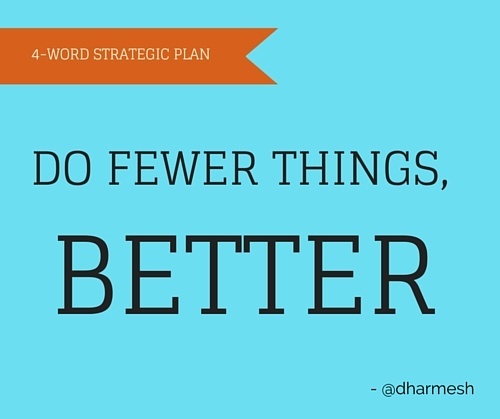If you have a sensitive stomach, you probably experience frequent bouts of digestive distress. While in some cases it’s obvious what has caused the discomfort—for example, eating spicy foods or taking seconds, or even thirds—other times it seems to be a mystery.
What you may not know is that it could have been something seemingly harmless, or even healthful—like green tea or yogurt—that caused you to feel nauseated or bloated.
FOODS TO AVOID
Surprising triggers of digestive discomfort…
Energy bars. Because these bars, such as Zone Perfect bars and PowerBars, contain added nutrients and vitamins, they typically are eaten as a healthful snack, a meal replacement or for a preworkout energy boost. Some bars, especially low-sugar or low-carb varieties, contain sugar alcohols, such asglycerin and maltitol syrup, which can cause bloating, gas and diarrhea. Other bars are simply too high in complex carbohydrates and calories for someone with a sensitive stomach to digest easily.
What to do: If you want to have an energy bar, be sure to eat only a small portion of it at a time.
Green tea. Although green tea is widely recognized for its disease-fighting properties—it’s full of antioxidants and other compounds that help fight cancer and heart disease and stave off diabetes, stroke and dementia—it contains irritants that can make you feel nauseated.
For example, green tea contains caffeine—anywhere from 24 mg to 40 mg per eight-ounce cup—which can irritate the gastrointestinal (GI) tract. Even decaffeinated green tea has some caffeine. But it’s not the caffeine by itself that makes green tea a cause of digestive distress in some people. Green tea is also very high in tannins (polyphenols responsible for its astringent taste), which are associated with nausea and stomach upset in some individuals.
What to do: If green tea makes you nauseated, avoid it altogether or have a very weak cup. Chamomile tea is soothing to the GI tract and is a good alternative.
Vegetable skins. Eggplant, bell pepper and potato skins can be difficult to digest, especially if you have diverticulitis (inflamed or infected pouches in the intestinal wall) or colitis (inflammation of the large intestine)…or have had complicated abdominal surgery (involving infection or perforation).
What to do: Peel thick-skinned vegetables, then purée, mash or stew the insides before eating to aid digestion.
Grapes. Red and black grapes contain the phytochemical resveratrol, a powerful antioxidant thought to help protect against coronary disease, some cancers and viral infections. But eating too many grapes—or even just a few if you are sensitive to them—can cause nausea and diarrhea. Reason: Grapes are high infructose, a natural sugar that often causes gas. Green grapes contain a lot of tannins, like green tea, which can lead to stomach upset.
What to do: Eat only a small amount of grapes, or avoid them altogether if you are sensitive to them. Instead, try eating other fruits rich in resveratrol, such as cranberries, blueberries and bilberries.
Nuts. The high fiber and fat content of nuts slow their movement through the digestive tract, which increases the risk for gas and bloating. Nuts also contain stomach-irritating tannins.
What to do: Avoid eating nuts if you experience digestive discomfort when consuming them…have had a complicated abdominal surgery…have peritonitis(inflammation of the inner abdominal wall)…or have diverticulosis (small pouches that bulge through the large intestine) or diverticulitis. Some alternatives to whole nuts include nut butters or oatmeal with berries.
Probiotics. The balance of healthful and potentially unhealthful bacteria in your digestive system can be thrown off due to illness, medications and diet, causing diarrhea and constipation. Probiotic supplements and foods contain live, healthful bacteria that can help restore balance to the digestive system. Examples of the bacteria contained in probiotics include Lactobacillus andBifidobacterium.
Certain probiotic supplements and foods are helpful for specific situations. For example, Activia yogurt can help alleviate constipation…the supplement Align can ease bloating…and Florastor (Saccharomyces boulardii lyo) helps diarrhea caused by antibiotics.
What to do: Many probiotic supplements and foods can produce bloating (due to the ingestion of billions of bacteria). Avoid probiotics if this is a problem for you.
Caution: If you are severely ill or your immune system is compromised, avoid probiotics (and check with your doctor before having yogurt). Probiotics can enter the bloodstream and cause sepsis, a potentially life-threatening condition caused by the body’s inflammatory response to bacteria or other germs.
Important: A sensitive stomach, marked by gas and bloating, may be caused byceliac disease, an immune reaction to gluten in wheat, barley and rye. If you have these symptoms, get tested for celiac disease.
BETTER-KNOWN TROUBLEMAKERS
You may already know that the following foods can cause stomach upset, but they’re worth a reminder…
Artificial sweeteners. Some artificial sweeteners, such as Splenda (sucralose), Equal (aspartame) and Sweet‘N Low (saccharin), are difficult for the body to break down, which can lead to bloating, nausea, headache and other symptoms.
What to do: Be on the lookout for artificial sweeteners, which are found not only in diet sodas and sugarless gum, but also in many other processed foods, including some yogurts, cereals, snacks and juices.
Carbonated beverages. These drinks contain carbon dioxide gas, which distends the stomach.
What to do: Avoid beer, soda, seltzer and other “fizzy” drinks if you have bloating. Plain water is best.
Monosodium glutamate (MSG). This flavor enhancer often is added to Chinese food, canned vegetables, soups and processed meats. It can cause nausea, headache, cramping, fatigue and other symptoms.
What to do: Avoid Chinese food, unless it is free of MSG, and avoid canned or processed foods with MSG on the label.
WHAT HELPS
How you eat and drink also can help prevent discomfort. For example, it’s widely known that having six small meals per day, rather than three larger meals, makes it easier for the stomach to empty properly. Other helpful approaches…
Drink liquids between meals. While the digestive system needs to be well-hydrated to function optimally, too much water or other liquids during meals can overdistend the stomach, especially in patients with gastroesophageal reflux disease (GERD), in which stomach contents backwash into the esophagus…hiatal hernia, in which part of the stomach sticks upward into the chest through an opening in the diaphragm…and gastroparesis, delayed emptying of the stomach.
Small sips of liquid during a meal are fine. Helpful: Avoid having a lot of liquids about 15 minutes before you eat and at least an hour after you eat.
Don’t talk while eating. This can lead to aerophagia, a condition caused by swallowing too much air, which can result in abdominal bloating, frequent belching and gas.
Eat slowly and chew well. Make sure to thoroughly chew foods—especially hard foods, such as nuts—before swallowing.
Stew meats. They are digested more easily than those that are broiled, grilled or fried.
Take chewable supplements. Many supplements can cause bloating or nausea. If possible, use chewable forms, which are less likely to cause discomfort.
WHAT CAUSES A SENSITIVE STOMACH?
Your stomach mixes food with digestive juices, then empties its contents into the small intestine. If you have a sensitive stomach, the muscles of the stomach may function more slowly, which can lead to indigestion. Or the nerves of the stomach may be overly sensitive to distension (enlargement of the stomach after eating), resulting in uncomfortable bloating. Eating certain foods, including onions, garlic, apples and pears, can make these symptoms worse.
Source: Christine L. Frissora, MD, assistant attending physician at New York-Presbyterian Hospital and an associate professor of medicine at Weill Medical College of Cornell University, both in New York City. Board-certified in gastroenterology, Dr. Frissora has given numerous presentations on irritable bowel syndrome (IBS) and coauthored studies on gastroenterology topics. She now is conducting a National Institutes of Health trial on the use of acupuncture to treat IBS.



























